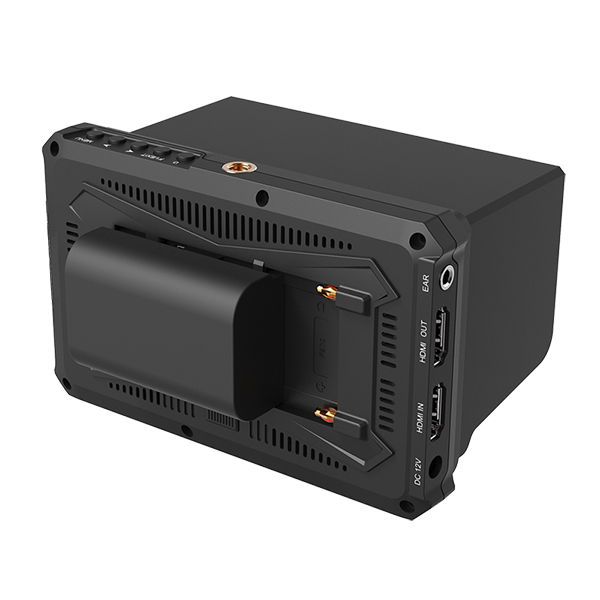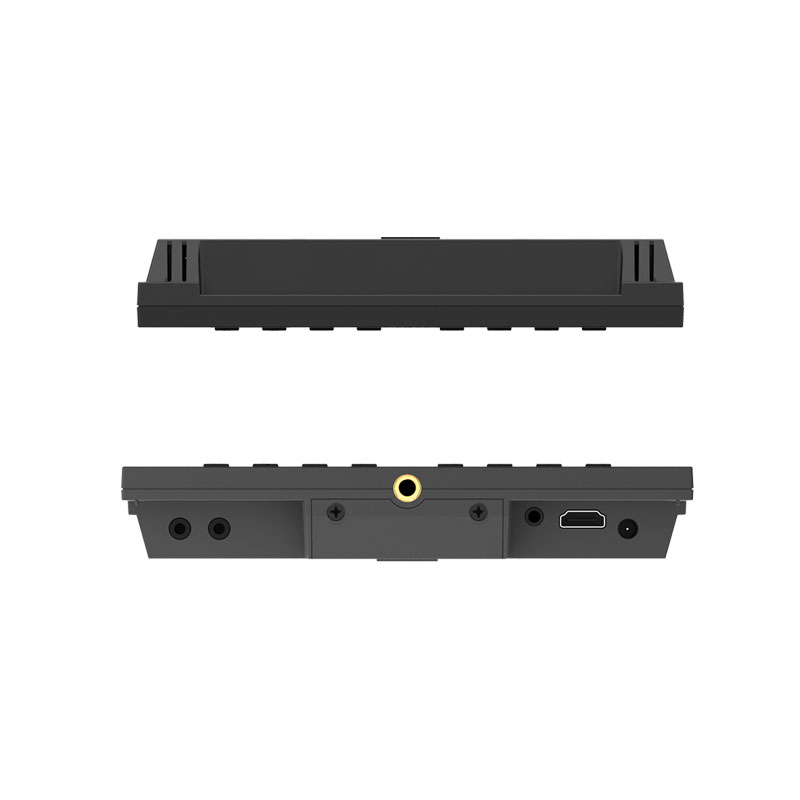A look at the new Orion HDMI Monitor app and how it might be one of the best iPad-to-monitor conversion tools yet.
Introducing the Orion HDMI Monitor app Monitor Sutradara

As we’ve covered on the site several times in the past, and most notably with the Accsoon SeeMo Pro, there have been some innovative tools released to help iPad owners turn their trusty Apple devices into working on-set production monitors.
However, with more competition, the results are bound to become better, more inventive, and—hopefully—cheaper in the future too. Which is why we’re excited to check out this new HDMI monitor app introduced by Orion and explore how it can serve as a simple, yet reliable, iPad-to-monitor app for your on-the-run production needs.
Introducing the Orion HDMI Monitor app While not exclusively designed for video production use, Orion’s HDMI Monitor app is about as simple to use and easy to understand as an app can be. To use this app, all you have to do is connect your iPad via any HDMI device with either a USB-C Capture Card or a dongle. The app is truthfully meant to serve simply as a larger display for gaming or other similar leisure activities while traveling or on the go. All you really need is an iPad with iOS 17 installed and a USB-C port, and you’re ready to jam. For gamers, this means that you can of course connect to any HDMI-enabled video game consoles as this tether will let you play enhanced HD games or even enjoy playing older games making use of a CRT emulation. The Orion HDMI Monitor LuxAn iPad Monitor for Production However, this new Orion HDMI Monitor app really shines for those looking to utilize it for video production purposes. Known for other popular apps in this space, Lux Optics has a strong history in this video production space and there are indeed some cool features that are more aimed at the video professional. In particular, it appears that this HDMI Monitor app has been tailored for use as an attachable extra display for any Mac or PC as part of someone’s video editing process. The app can also help turn your iPad into a production monitor, which you can attach to your camera. As an on-camera monitor (or part of a video village), this app can quickly turn your iPad into your go-to monitor for on-the-run shoots where you might have to get creative with your gear limits and uses. Admittedly, it’s not going to be the highest-end version of one of these tools, but if you’re shooting solo or with a DIY crew, it can be a hugely helpful tool in a pinch. Turn your iPad into a monitor LuxPrice and Availability The best part about this app, and why we’re recommending it as a solid option worth checking out for anyone interested in turning their iPads into production monitors, is simply because it’s free to download in the Apple app store. Of course, there is a paid Orion Pro version with some extra features (which, most notably for our video purposes, includes an AI-powered 4K Upscaler and Picture Adjustment tool for video brightness). However, these features only cost a one-time fee of $4.99 if you are interested in them.
While not exclusively designed for video production use, Orion’s HDMI Monitor app is about as simple to use and easy to understand as an app can be. To use this app, all you have to do is connect your iPad via any HDMI device with either a USB-C Capture Card or a dongle.
The app is truthfully meant to serve simply as a larger display for gaming or other similar leisure activities while traveling or on the go. All you really need is an iPad with iOS 17 installed and a USB-C port, and you’re ready to jam.
For gamers, this means that you can of course connect to any HDMI-enabled video game consoles as this tether will let you play enhanced HD games or even enjoy playing older games making use of a CRT emulation.
However, this new Orion HDMI Monitor app really shines for those looking to utilize it for video production purposes. Known for other popular apps in this space, Lux Optics has a strong history in this video production space and there are indeed some cool features that are more aimed at the video professional.
In particular, it appears that this HDMI Monitor app has been tailored for use as an attachable extra display for any Mac or PC as part of someone’s video editing process. The app can also help turn your iPad into a production monitor, which you can attach to your camera.
As an on-camera monitor (or part of a video village), this app can quickly turn your iPad into your go-to monitor for on-the-run shoots where you might have to get creative with your gear limits and uses. Admittedly, it’s not going to be the highest-end version of one of these tools, but if you’re shooting solo or with a DIY crew, it can be a hugely helpful tool in a pinch.
Turn your iPad into a monitor
The best part about this app, and why we’re recommending it as a solid option worth checking out for anyone interested in turning their iPads into production monitors, is simply because it’s free to download in the Apple app store.
Of course, there is a paid Orion Pro version with some extra features (which, most notably for our video purposes, includes an AI-powered 4K Upscaler and Picture Adjustment tool for video brightness). However, these features only cost a one-time fee of $4.99 if you are interested in them.
Damnation showrunner Tony Tost shares his number one quality of a staff writer.
Ah, to be an aspiring writer in the Golden Age of Television.
Writing for television is a dream that many readers across our platform share. Every time I've worked in a room, it's been a lot of hard work, and incredibly satisfying to see my work come alive.
But writing for TV is a constant slog of writing TV pilots to try to sell them and taking general meetings in order to try to get staffed on other TV shows.
Since I can only control my own writing, I am always looking for something that can give me a leg up when it comes to meeting with execs and showrunners who can hire me to staff.
One of the resources I've been reading is from Netflix's western Damnation showrunner, writer, and director Tony Tost. He has a Medium newsletter called 'Practical Screenwriting' where he doles out advice and information that is incredibly helpful for people trying to break into Hollywood.
This week, Tost wrote about what he looks for when it comes to hiring writers for his rooms.
Tost elaborated, writing, "Whenever I’m talking to a potential candidate for any of the above positions, the question I’m silently always asking myself is this: Will this person make my job easier?"
That's a frank and direct question a showrunner can pose. It gets right to the heart of what the staff's ultimate goal should be: servicing the showrunner's vision.
Tost explained why it comes down to this, writing: "That’s just about always the deciding factor for me when it comes to hiring decisions. Because inevitably, I end up meeting with more qualified and appealing candidates than I can hire. I also tend to personally like most of the people I meet. So, I have to come up with some kind of rubric."
If that's the rubric; what is the thought process behind it?
Basically, Tost explained that it comes down to how time-consuming television is and how the hours can be long and grueling. You have to be choosy with who's coming along for the ride because when the going gets tough, you need good people surrounding you... who are tough... and care about the project.
In Tost's words, "...because showrunning is such a demanding, challenging, time-consuming job, I have to be super selfish and pretty picky in deciding on who I’m taking on that journey with me. So the deciding factor is always the same thing."
So, how does this help writers who read this?
Well, I plan on incorporating that into my self-pitch. I'm going to be upfront that it's my goal to make the showrunner's life easier. I plan on talking to the showrunners I've worked with in the past to get some honest critiques on what I did well to accomplish this goal and what I can do better in the future.

production monitor Being a team player and working to support your showrunner seems obvious on paper, but goes a long way to communicate and standby when pitching to land in a writer's room. Think this is a good idea? Any other advice or experience landing a job in a writer's room? Let us know below!